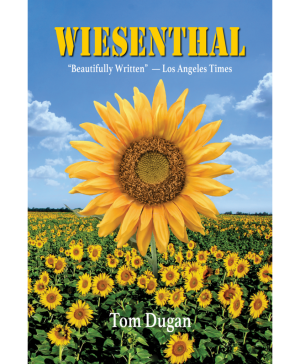The text to this beautifully produced book is an interplay between the artist’s personal memoir and the author’s interpretive narrative, the latter giving it a particular cast due to the author’s background and her connection to her subject. Kalman Aron, born in Latvia in 1924, was already a student of art when his country was engulfed in World War II. His harrowing experiences in labor and concentration camps are described and accompanied by some drawings. As was not uncommon, Aron sometimes received an extra piece of bread for drawing a picture for a guard. His memories are vivid as they are for most Holocaust survivors, recalling chillingly terrible times in the non-emotional tones of a person at a distance from the experience itself. He reiterates the sense of his never having lost the optimistic view that the terrible time would end and civilized life would return. The artist credits his survival to that optimism.
After the war, Aron eventually migrated to Los Angeles and it was there as a young child that the author first came into contact with him when he painted her portrait at the behest of her mother, an interior designer who had noticed some of his paintings in a window of a gallery. He continued to paint portraits and landscapes throughout a long career in a style that has been called “psychological realism.” While Aron was raised in an Orthodox Jewish home he states that he lost his faith during the war years and has never identified or affiliated with Jewish institutions. Only the first two of his four wives were Jewish. His son David, born to his third wife, is also an artist. In a chapter in the book devoted to his recollections of life with his father, David offers his own analyses of his father’s paintings, techniques and style and credits Aron with having given him “the gift of art making.”
Seeing the film “The Pianist” triggered Aron’s desire to tell his own story. Susan Beilby Magee’s analyses of Kalman Aron’s life and art are lucid and insightful and bring a creative perspective that is unusual in a book about the influence of a Holocaust background on the life and work of an artist. 120 color and b/w illustrations.





